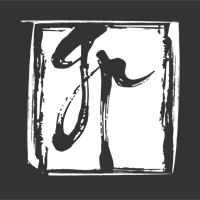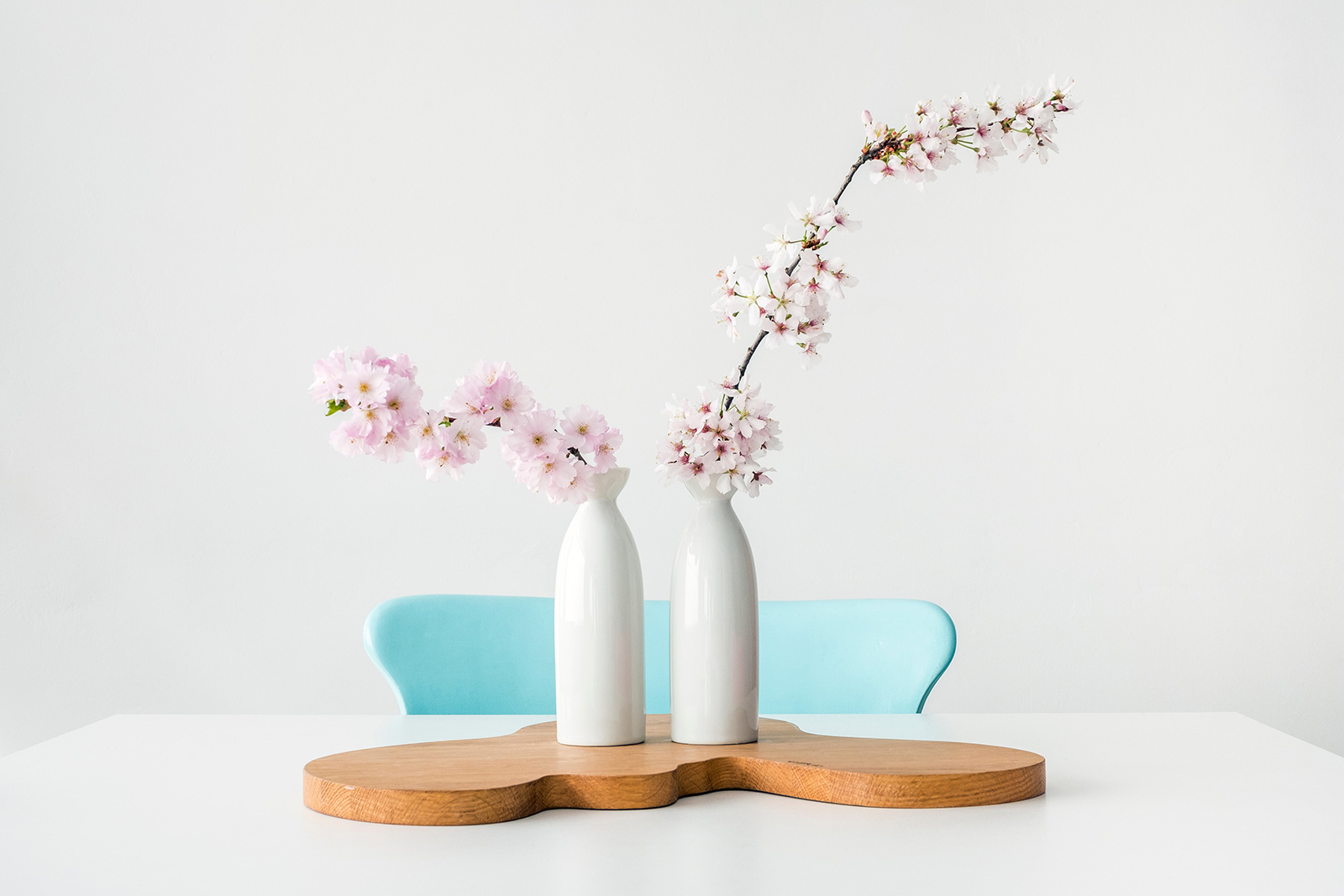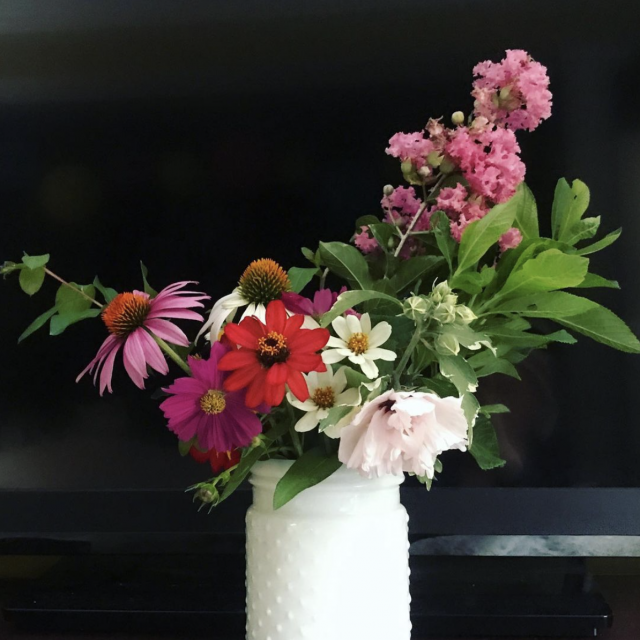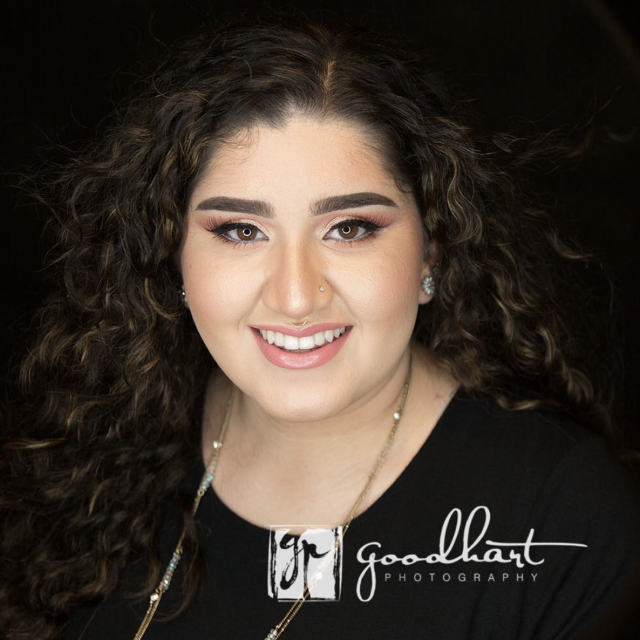The Konmari Method is Marie Kondo’s strategy for cleaning your spaces and bringing life-changing magic to your life. Sounds good to me! A clean, organized environment can be very beneficial for invoking a sense of calm and purpose before beginning a project or task.
I’m a bit of a challenge, however, as I’m a very creative person who enjoys a variety of hobbies and activities. That probably explains my resistance to the Konmari Method, but I finally picked up Marie Kondo’s manifesto “The Life-Changing Magic of Tidying Up“. I’m six years late to the party, but I was ready to see what she had to say about decluttering and beautifying one’s home so that it becomes a haven that brings you joy.
Marie Kondo is described on the back of the book as a “Warrior Princess” in the war on clutter. That pretty much sums it up. Even as she weaves lovely little narratives about her journey to clutter warrior with a poised and elegant voice, she is brutal about the necessity of getting rid of and carefully organizing one’s possessions. She calls her strategies the Konmari Method.
The Three Main Points of the Konmari Method
Konmari Method Rule 1. Clean your home in one fell swoop.
This is to avoid the rebound effect, or things getting cluttered again. Marie believes that rebound occurs because you didn’t truly declutter your home. You may have just shifted possessions from one room to another and avoided decision making. Or while you may have put things away, you failed to get rid of anything that doesn’t spark joy.
One fell swoop doesn’t mean in one day, but it does mean it’s pretty much the only thing you do in your free time until it is all done.
Honestly this strikes me as extremely unrealistic unless you live alone or can make the world stop for a week or month while you are busy sorting, discarding, and organizing your possessions. Plus I think that you can have a decluttered space and it can become cluttered again, because you live with other people who don’t share your same fascination with the Konmari Method, or because you decide to feed your creative side for a while instead of your minimalist side.
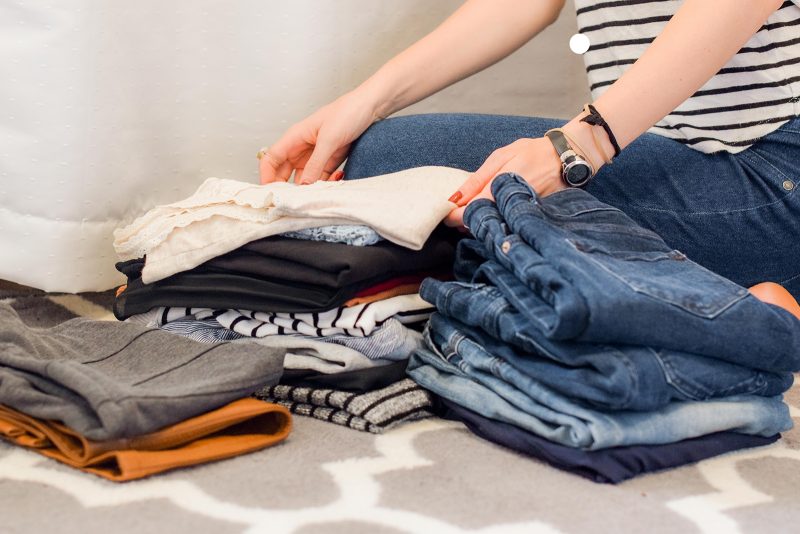
Konmari Method Rule 2. Clean your home by category, not by room.
This means gathering every single item in a category (such as clothes or books) in your home into one area, and then sorting the items into discard and keep piles. The keep pile is organized into logical places in the home, and the discard pile is donated or thrown away. Under no circumstances are you to move the discard pile into the garage or the basement or your child’s closet.
When choosing categories, Marie recommends starting from the least emotional category and working your way up to the most emotional category. So, sort your books and clothes and kitchen supplies before photos and letters and children’s artwork.
I like this idea a lot and found it to be very practical. I did this with our clothes, and having everyone’s clothes from every single season in one area where I could deal with them made it so easy to see exactly what we had, what was a duplicate (how many hoodies does a teen need?), and what we still needed to purchase. Then when I put them away, folded neatly and using some organizational items like boxes and baskets, it made a huge difference in everyone’s closet and room.
However I disagree with her assessment that books are not emotional and personal! I love books so much. Nevertheless I was able to get rid of five boxes of books using her techniques.
Konmari Method Rule 3. If it doesn’t spark joy, get it out of your home.
This was probably the most liberating and valuable part of the Konmari Method for me.
I am a sentimental and emotional soul, so I hold on to things from my past that I neither look at nor use. Like notes passed around during class in high school. Matches from restaurants I attended with beaus. Scrapbooking supplies which gave me years of joy but now rebuke me with their unused abundance. Gifts from people that no longer seem beautiful to me.
Then there are the aspirational items I own. Much of my home has become a monument to ideas, projects, and items that no longer appeal to me or interest me, but I feel compelled to keep them anyway. What if I become interested in quilting or knitting or calligraphy again?
I also come from a long line of frugal New England farmers. My grandmother used to rinse and reuse tin-foil. I don’t think she ever bought cookies from a store in her life — they were always handmade, always in a cookie tin right by the front door. She could reuse or repurpose anything, and my creative and practical spirit shares that kinship with her. So I have a shelf of old paint because #CouldBeUseful, and dozens of backdrops in my studio that I haven’t used in years because #options!
And finally, some of the items that no longer spark joy were expensive or in my mind could be resold for a decent chunk of change on Ebay or Craigs List. Of course I never have time to get around to selling it!
With Marie Kondo’s voice in my head reminding me that an item’s purpose is how it makes you feel, I was able to get rid of more than I ever dreamed possible. She says the FEELING is important, whether it’s the flash of happiness you get when you receive a gift (regardless of the utility of the gift), or the happiness you get imagining wrapping your baby in a blanket you knit for him (yes this happened, I have a 75% completed baby blanket for my baby who is now 19 years old).
And when the feeling is gone, the item has served its purpose for you. So it’s time to let it go and let it serve its purpose for someone else. That was so helpful to me, to think that the calligraphy kit that has been reproaching me from my book case might go on into someone else life where they can learn calligraphy and perhaps develop a life-long passion for it.
Also, the idea of living in a space where everything sparks joy (rather than guilt or stress) is so appealing. There are certain items in my home that make me feel happy when I look at them — like a light mossy green clay vase filled with white silk peonies, or the canvas gallery wrap of my three children that greets me when I walk into the door of my home. Why not try to make my entire home like that.
Final Thoughts
While I did make a lot of progress, I was not a Konmari success story. I sorted clothes by category, but then resorted to tidying up a room at a time. I also wasn’t that ruthless in sorting items — if I couldn’t make a choice, I would put it in a box to decide later. So yes, my journey to a completely decluttered environment is still far from over.
But in spite of this, I still created a much better living space. I love my closet, and I have a really good handle on exactly what I own and where it is. The main level of my house is in good shape and is almost always ready for company. I’m pretty ruthless now with magazines and mail. I was able to pass along a lot of items I had hung onto for years by reminding myself that the item had served its purpose and that someone else would probably love to have it. And, as I sit here on the sofa typing this blog post, the things I see around me right now do in fact spark joy.
So Marie Kondo and her Konmari Method did in fact upgrade my life. I was able to take what I wanted from her book without slavishly following all of the aspects I couldn’t or wasn’t ready to implement. I am much happier with my living space as a result of her book.
And, in case you were wondering, “The Life Changing Magic of Tidying Up” passed the Konmari test and still lives on my bookshelves.
What about you? Have you read Marie’s book or tried her techniques? Or do you have another way to combat clutter? You can check out her book here on amazon.
Did you enjoy this article? You might enjoy my monthly newsletter!

